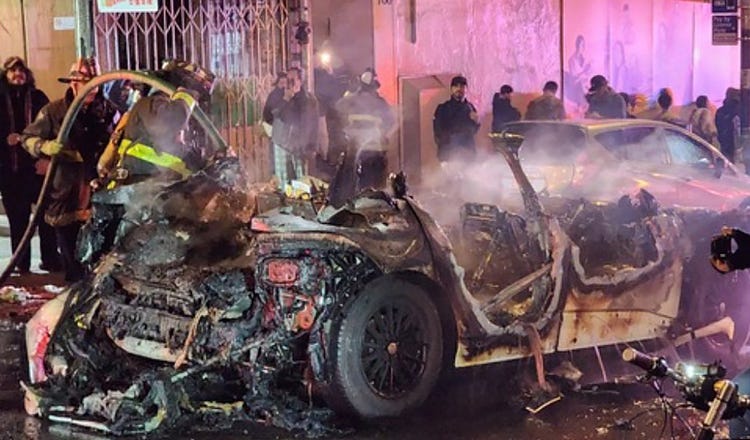We Are All Bad Drivers

The wreckage after a mob attacked a self-driving car in San Francisco’s Chinatown neighborhood. (Séraphine Hossenlopp via the San Francisco Fire Department)
Anyone rooting against self-driving cars is cheering for tens of thousands of deaths, year after year. We shouldn’t be burning self-driving cars in the streets. We should be celebrating them.
196
The simmering anger toward autonomous vehicles—and tech writ large—ignited, literally, in San Francisco this month. A mob attacked one of Waymo’s self-driving cars in San Francisco’s Chinatown neighborhood, vandalizing the Jaguar robotaxi. Then someone threw a firework into the passenger seat. The innocent self-driving car was burnt to a crisp.
For some,…
Continue Reading The Free Press
To support our journalism, and unlock all of our investigative stories and provocative commentary about the world as it actually is, subscribe below.
$8.33/month
Billed as $100 yearly
$10/month
Billed as $10 monthly
Already have an account?
Sign In

